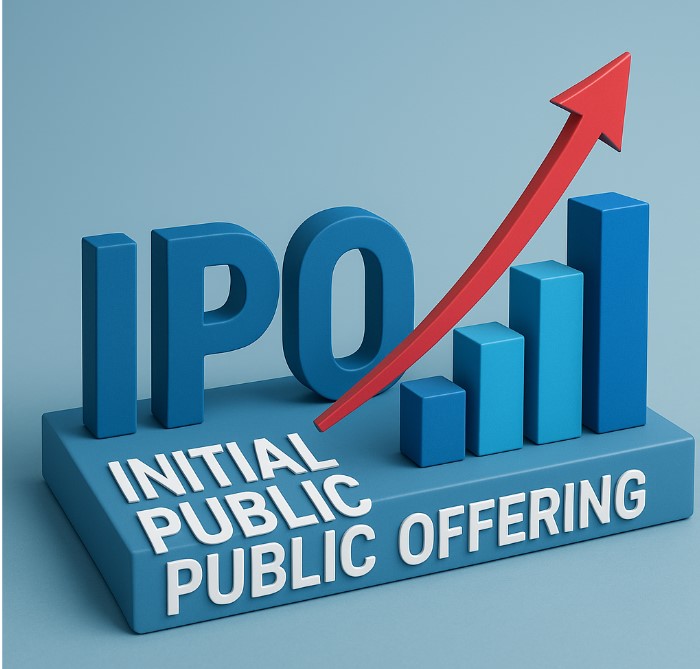
Beyond the Hype: Evaluating the Real Value of Upcoming IPOs
Wanna earn more? The stock market is buzzing with excitement whenever a high-profile Initial Public Offering (IPO) is announced. For investors, IPOs often seem like a golden opportunity to get in on the ground floor of the next big company. But amidst the excitement, it’s essential to look beyond the headlines and evaluate the real value of these upcoming IPOs before jumping in.
An IPO isn’t just a quick chance to make money—it’s a long-term investment decision. Beyond the hype, evaluating a company’s financial health, growth potential, and market competition will help you separate the winners from the risks. Take the time to dig deeper and make informed decisions that can pay off in the future.
What is an IPO?
An IPO, or Initial Public Offering, is the process by which a privately owned company offers its shares to the public for the first time. This provides the company with a chance to raise capital for expansion, while also giving early investors and employees an opportunity to cash in on their stakes. But while the allure of buying stock at an IPO price can be tempting, it’s not always as straightforward as it seems.
The Hype Behind IPOs
IPOs often come with a significant amount of hype. Investment banks, media outlets, and even celebrities may hype up an IPO, making it feel like a must-buy investment. But this hype can cloud judgment, leading investors to overlook critical details that could affect the long-term performance of the stock.
Here are some key factors that could influence the value of an IPO:
1. Financial Health of the Company
One of the most important factors to consider is the financial health of the company going public. Look at their revenue growth, profit margins, and debt levels. A company with high debt or declining revenues may be more vulnerable to market fluctuations than one with steady cash flows and a robust financial position.
2. Growth Potential
Evaluate the company’s growth potential. Does it have a strong business model? Is it operating in a growing industry? For instance, technology companies or those in renewable energy tend to have more potential for growth than industries that are stagnating. Pay attention to the company’s future plans for expansion and whether they align with market trends.
3. Valuation and Pricing
An IPO’s valuation is a critical aspect to evaluate. Many times, companies price their shares high in anticipation of strong demand. However, an overly inflated price could lead to poor returns post-IPO. Comparing the company’s valuation to its industry peers can give you a clearer picture of whether the price is justified.
4. Underwriter Reputation
The investment bank or underwriter behind an IPO plays a significant role in its pricing and overall success. A reputable underwriter with a strong track record can help ensure the IPO is priced appropriately and that the company has access to a solid investor base. If the company is backed by a top-tier bank, it’s usually a sign that the IPO has a better chance of success.
5. Lock-Up Period
Most IPOs have a lock-up period, typically 90-180 days, during which insiders and early investors are not allowed to sell their shares. It’s important to be aware of when this period ends, as a flood of shares entering the market could drive the price down.
6. Market Sentiment
The broader market conditions also play a major role in an IPO’s performance. If the market is volatile or in a downturn, even the most promising IPOs may struggle. Keep an eye on market sentiment and whether it’s conducive to IPO performance.
7. Competitive Landscape
Another crucial factor is the competition within the industry. If the company has multiple competitors offering similar products or services, it will need to demonstrate a clear competitive advantage to stand out. Look for unique value propositions, strong brand loyalty, or technological innovations that set the company apart.
8. Insider Selling
Watch for signs of insider selling during the IPO process. If key executives or large shareholders are selling significant portions of their holdings, it could be a red flag. While insiders may sell for personal reasons, it’s always a good idea to dig deeper to understand their motives.

How to Evaluate an IPO?
To properly assess an IPO, it’s essential to do your homework. Here’s a simple checklist to help evaluate an IPO’s real value:
- Review the Prospectus: The company’s prospectus is a goldmine of information. It contains details about the company’s finances, business risks, and plans for the future.
- Compare Financials: Look at the company’s P/E ratio, growth projections, and debt-to-equity ratio. These indicators can help you assess its overall health.
- Understand the Business Model: How does the company make money? Does it have a scalable business model? These are crucial questions to answer before buying shares.
- Seek Expert Opinions: Don’t rely solely on hype. Look for independent opinions from analysts and experts who evaluate the company’s prospects.
The Bottom Line: Patience Pays
While the temptation to invest in an IPO might be strong, it’s important to exercise patience and due diligence. The right IPO can bring significant returns, but it’s vital to evaluate the company’s fundamentals and not just the excitement surrounding the launch.
Remember, an IPO is just the beginning of the company’s journey in the stock market. It’s the long-term performance that truly matters. Don’t get swept away by the hype; take a step back, evaluate the real value of the company, and make informed decisions that align with your investment strategy.
Is your next IPO investment based on hype, or have you evaluated its real value?
